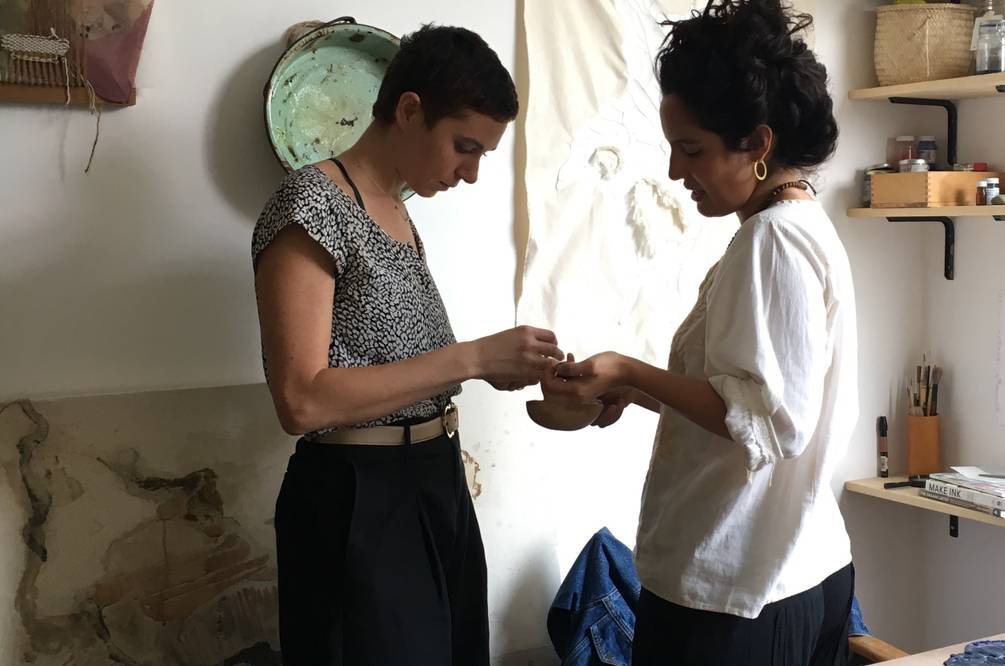
Interview
Interview with Sofía Fernández Díaz (or Bucareli Tacos)
by Sofía Ortiz
Reading time
5 min
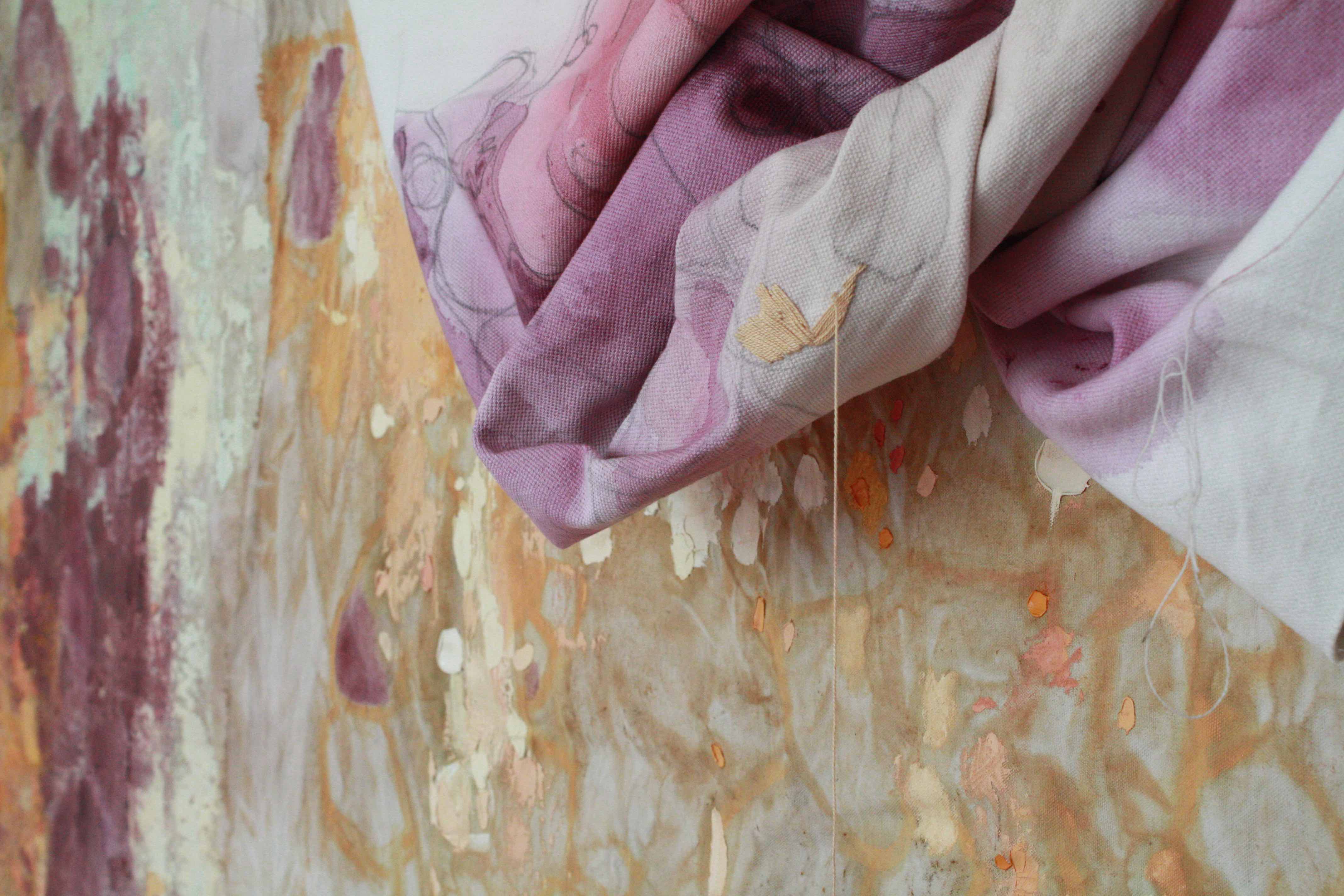
Sofía Ortiz — This phone is pretty new.
Sofía Fernández Díaz — Is this your first voice memo?
SO — Yeah, I just bought it. I’ve been bouncing from cell phone to cell phone.
SFD — Isn’t that how it goes...
SO — We still haven’t ordered, right?
SFD — I want one with shrimp.
SO — How did your residency go? The one in Baja California.
(Peruvian music enters: a man carrying a guitar with a pan flute mounted on it, playing and blowing ‘“The Sounds of Silence.”)
SFD — Ooff!! The house is called “Earthship”…It’s majestic…so diverse: jungle, desert, beach, forest…the sea, another fucking world…I swam with sharks…It’s something you have to see for yourself.
SO — Did it send you into yourself?
SFD — A lot. I crave nature; it’s a perfect state.
SO — And the show at Karen Huber? Have you been?
SFD — They wouldn’t let me enter with Badú. He’s been depressed ever since we returned to the city.
(More men enter to play music. End of recording)
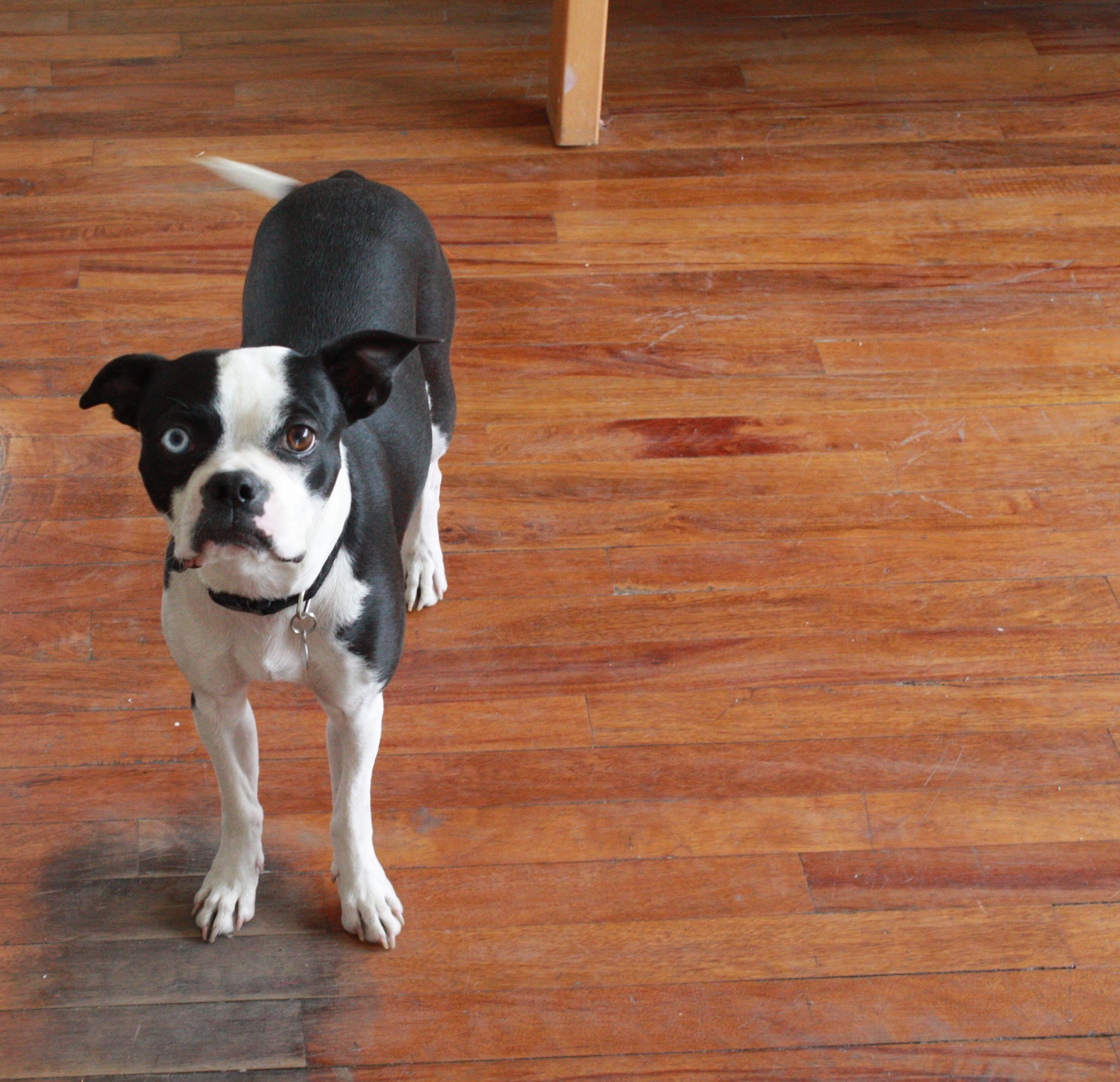
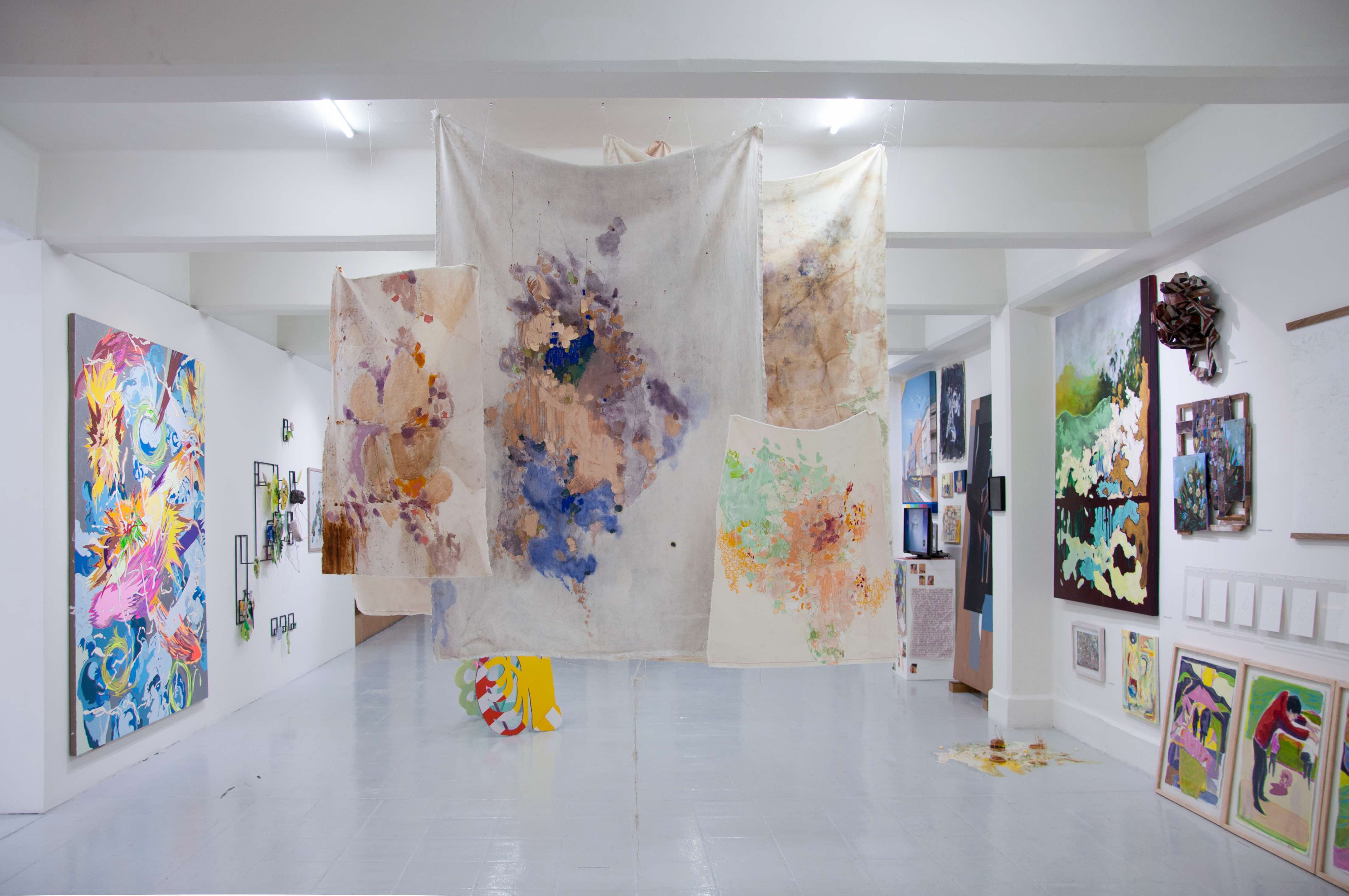
24 hours later
I realize that out of the entire audio file, 73:02 minutes, only the first 7:02 minutes were recorded. So I find myself here, in this questionable cafe in Condesa, trying to reconstruct our conversation. From this point on the interview is at the mercy of my memory, with the interviewee’s right of reply.

At some point Sofía tells me that talking about her work takes a lot out of her. I pressure her a little, “Surely you’ve had to do it before,” I push. “What do you say when you have to say something?” She repeats: “I don’t know, I don’t know, I don’t know.” Then she tells me that for her the work is in the body, and I imagine her need to create as attenuated electric waves that travel under her skin. She says that this is why she paints and makes sculpture, because words have never worked for her. In other words, the act is the thing.
She tells me that at her last residency, in Todos Santos, Baja California, she began to see everything more clearly. Began or returned? At some point I ask if her work progresses from discovering new interests or, rather, from excavating those that are already there—similar to the age-old question of whether math is invented or discovered—and we agree that the artist’s interests seem to be formed from a very young age, as with the rest of a person. Creating a work is an eternal return to those same few things that have always pulled you along, or inside.
Sofía’s work is colorful, earthy, and handmade. She uses organic elements—clay, wax, and natural dyes—to make abstract paintings and sculptures that are definitely standard-bearers for “process art.” I was surprised to hear that her new toys include a microscopic lens for her cell phone and a video camera. She told me she is filming textures very closely, mesmerized by visual coincidences at different scales, like how paths traced by drops on glass echo those traced by stretch marks on thighs. This last image is not the one she used; I think we are alike in these trains of thought.
During her residency she projected the videos on fabrics installed in a long corridor by the sea. She says that fabric calls to her as the most intimate material. “I would love to make clothes, but I’m no good at that,” she says. In Oaxaca, where she lived a couple of years after winning the Tamayo Biennial in 2014, Sofía would leave fabrics outside and then trace the topographies of the resulting mold with paint, thread, and pencils. Now she hangs thin fabrics along long corridors by the sea, creating tunnels of expanded color that, like gauze to a wound, wrap one’s body. She is interested in slow, repetitive work: embroidery, beading. I then ask, in a question that says more about me than her, if using traditional feminine forms of production means she views her art as political. “Don’t know...” she answers. “I’ve never really thought of it that way.” At that moment, suddenly, a very clear image forms in my mind: Sofía sitting in a room without moving, embroidering a fabric for hours, forever still, focused, and unthinking. I realize why she started the interview talking about her body. Her work is the imprint of a body calmly breathing. The stitches, beads, and strokes are stand-ins for an otherwise absent presence: Sofia was here. And it is not only imperfectly present, but also error-prone: the embroidered stitches are irregular, the wax uneven. A quietly existing body is a resistance to a world bent of progress, although a subtle resistance can go unnoticed. Perhaps Sofía cannot easily talk about her work because it has circumvented her throat and nestled deep into her insides; words empty out work made to be felt.
Ask a fish about water.
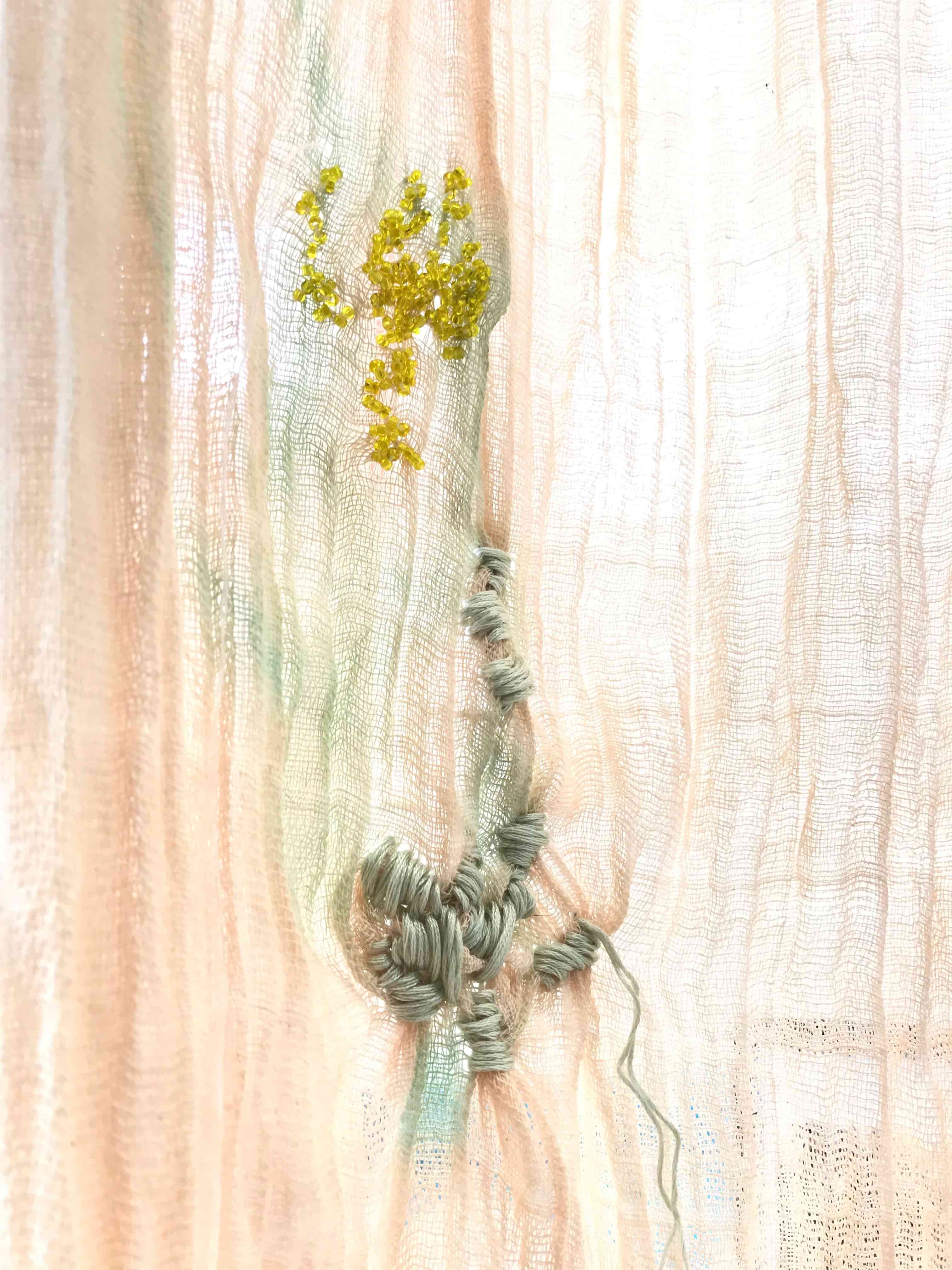
We talk of other things: of living in the country or the city, of how she left printmaking in search of less toxic materials, of her fixation on flour, of why high school sucked, of how she wants to live by the sea, of how she is looking for a small apartment (should anyone happen to have leads…?), of art vs. craft (we didn’t agree).
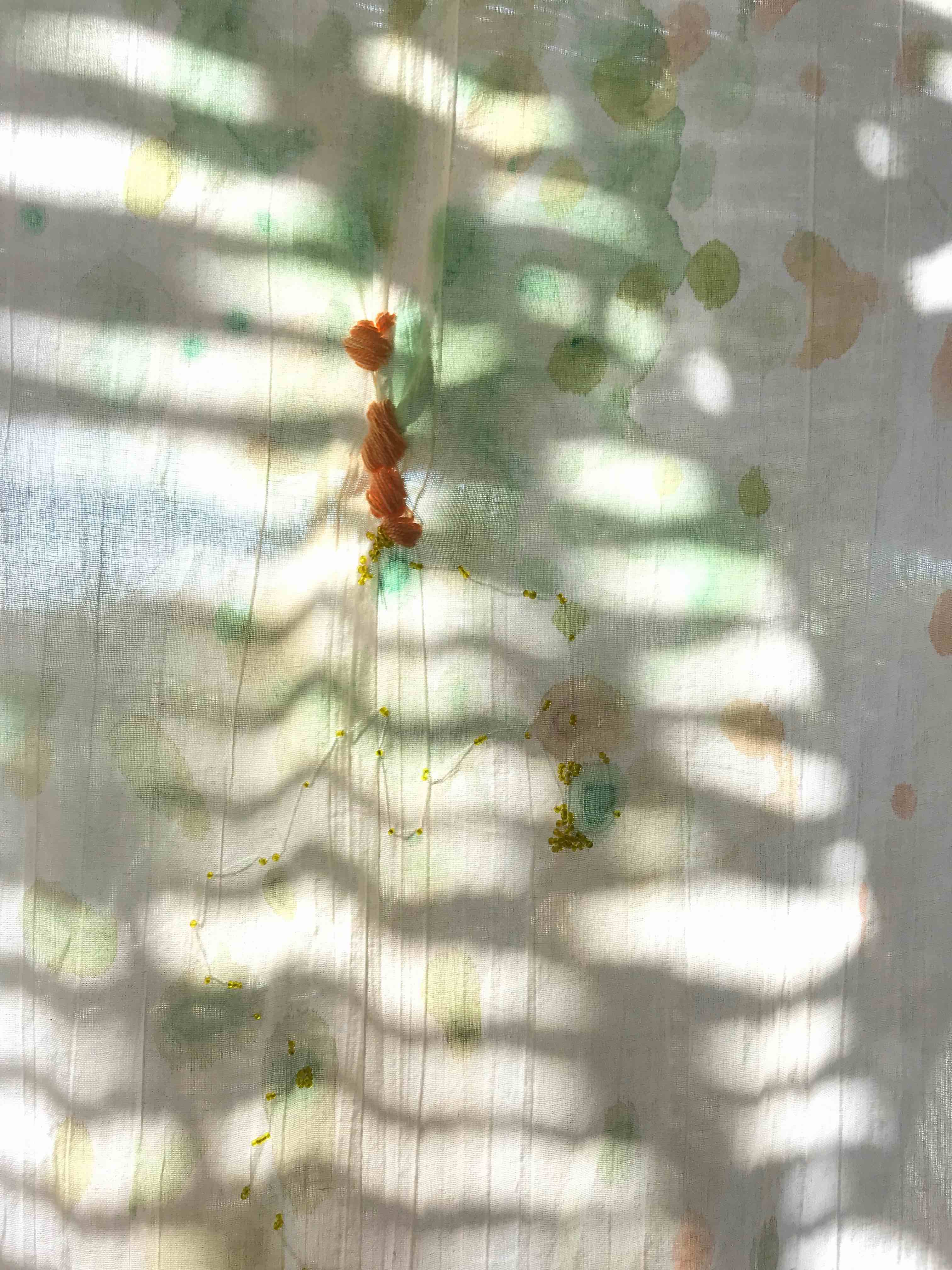
We smoke in the doorway and part ways. Perhaps I’ll see her tomorrow.
Published on Jan 17 2020